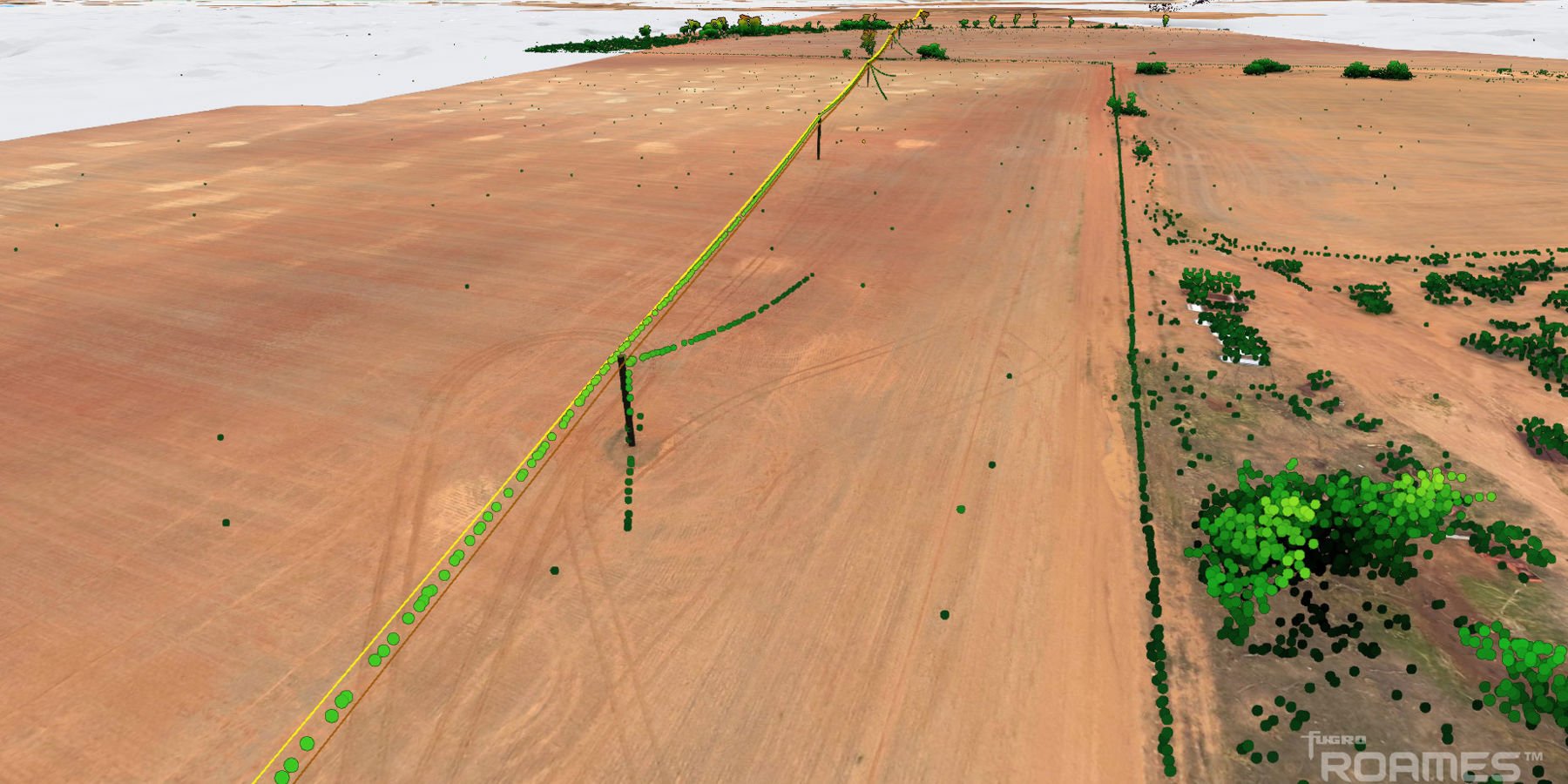Innovative LiDAR (Light Detection and Ranging) technology was an important part of Western Power’s extensive repair and recovery operations in the Mid West following the damage caused by Tropical Cyclone Seroja in April.
Western Power Asset Management Executive, Gair Landsborough said using this technology underlined the business’s journey to use innovative measures to transform the grid and improve services for the community during emergency scale events.
LiDAR, which uses a laser beam directed from a fixed-wing aircraft to take real time 3D images of Western Power assets, was introduced during the third week of the cyclone recovery operation, helping to assess damage and identify fallen poles and wires across affected parts of the City of Greater Geraldton.
Tropical Cyclone Seroja crossed the WA coast on 11 April carving a path of destruction across the Mid West and Wheatbelt and leaving 31,500 properties and businesses without power and damaging around 20 per cent of the network.
Mr Landsborough said Western Power’s widespread recovery operation across the impacted region included the initial assessment of damaged infrastructure, hazard and fault identification using ground and helicopter crews, and an extensive repair and restoration effort lasting almost eight weeks.
“We mobilised aircraft fitted with LiDAR capability from Bunbury and conducted several flights a day in and around Geraldton to assess potential damage to high voltage feeders and other infrastructure,” he said.
“The intelligence captured supported our Network Operations Centre and crews on the ground by quickly and accurately identifying damaged infrastructure and supporting this with data and imagery to prioritise repairs and restorations. By using historical data captured over the past two years, LiDAR enabled us to validate our knowledge of hazards on the ground and identify the priority items needing urgent repairs.”
Mr Landsborough said the successful application of LiDAR technology during the cyclone recovery operation highlighted its ongoing use during similar large-scale events in future.
“It gives us the ability to mobilise quickly to survey damage a day after a large-scale event, providing detailed information on the location and magnitude of structural damage to the network within 48 hours,” he said.
“Once these items have been identified, the data can assist our Asset Operations function to develop the necessary plans for rebuilding and repairing as well as prioritise repair activities.”
LiDAR technology was introduced by Western Power in 2017 and has proved useful in monitoring and understanding the network and the surrounding environment.
The first full survey of the Western Power network was done in 2019 and makes it possible for the company to easily compare what the network physically looked like in 2019 versus today. It was used to capture pole lean and clearance data that would usually take six years in just 11 months and has generated millions of asset records that now support decision-making processes.
Mr Landsborough said LiDAR helps identify large-scale issues on the network as well as smaller changes such as minor lean in poles and sagging in overhead powerlines.
“These conditions may not necessarily require an immediate fault response or even medium-term repairs but form an accurate record of conditions that can be monitored through future LiDAR surveys,” he said.
“There are many benefits to this technology. In addition to providing us with a clear line of sight of the geometric state and location of our assets, it helps maintain community safety and accurate maintenance scheduling – this technology is a must for us moving forward.”
